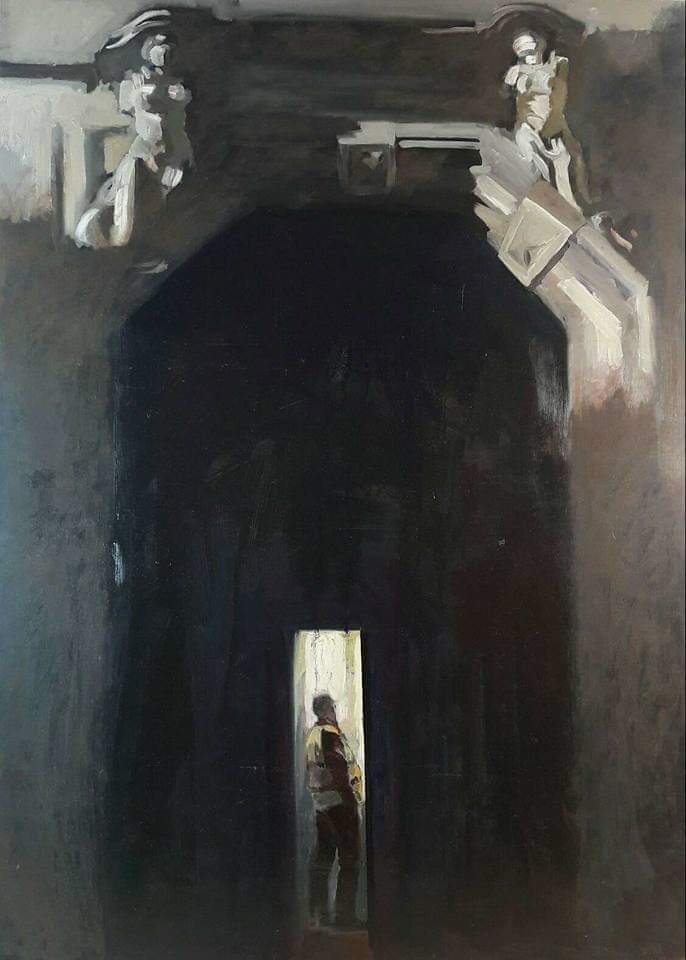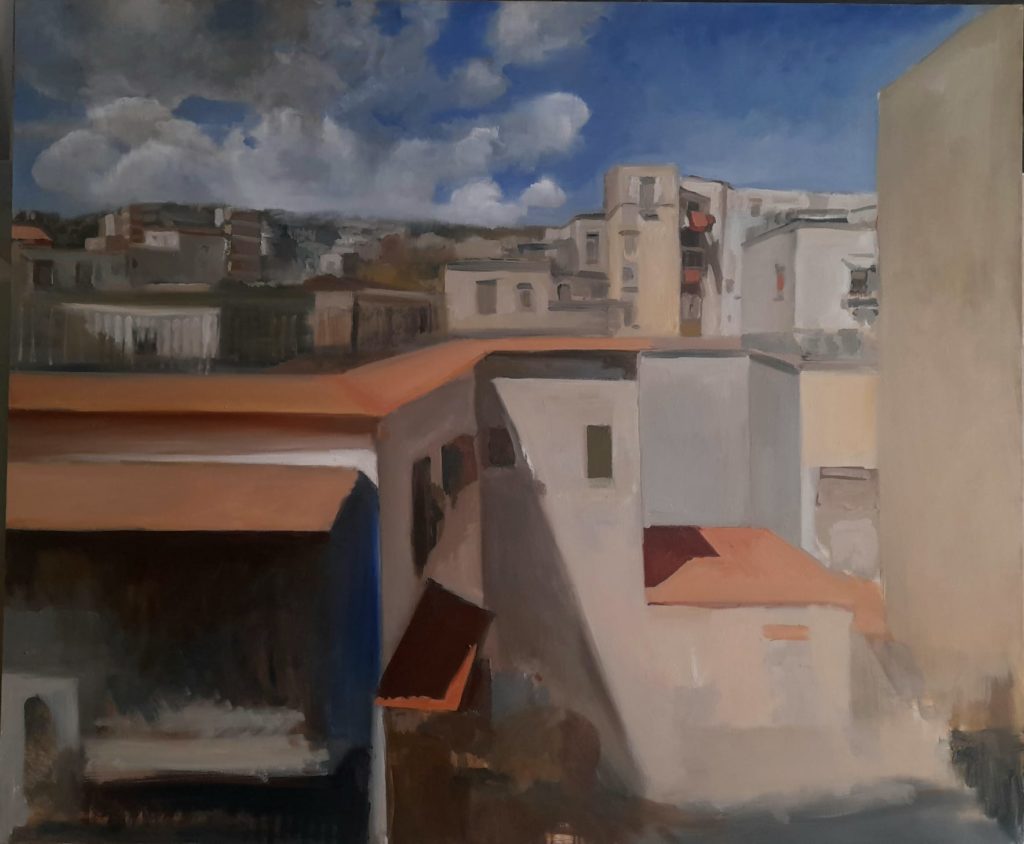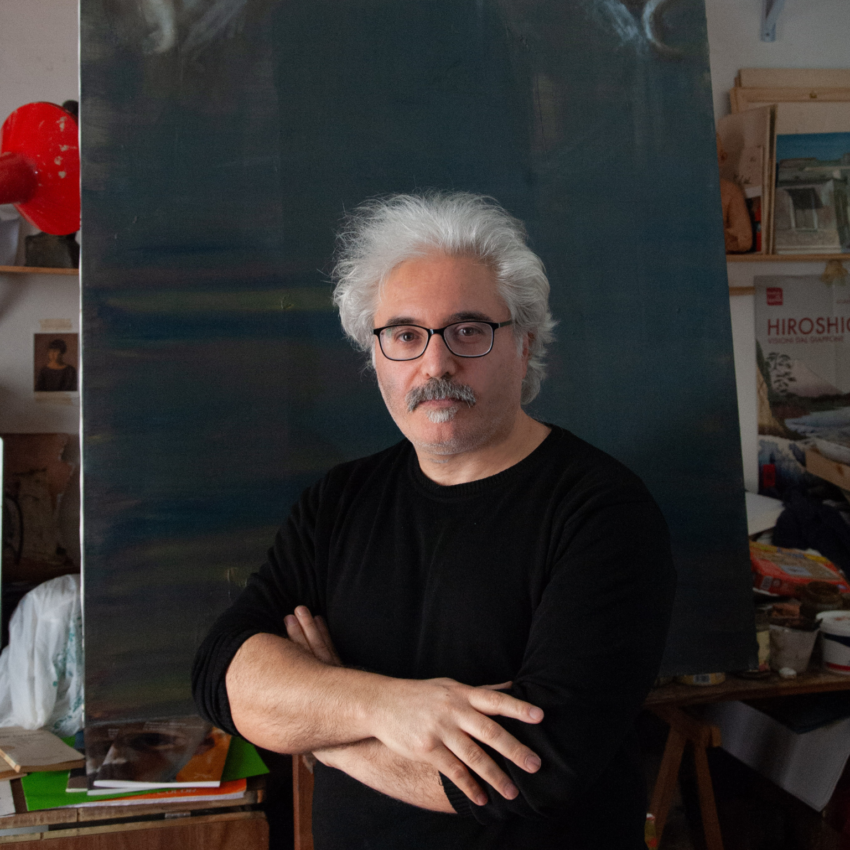Share the post "Where time flows indelible in the painting. Interview with artist Paolo La Motta"
The artistic production of Paolo La Motta (Napoli, 1972) is a continuous flow of memories and sensibilities that intertwine and find an ever-new dimension, apparently frozen in time in the figures and colors that the artist imprints on the material.
Born and raised in the Sanità district of Napoli, where he still lives today, it is the place par excellence where the artist’s memories are transformed into works of art until they become postcards to be framed and from which to extract the eternal from the ephemeral. A place of strength, reflection and synonymous with opportunity.
Before studying at the Academy of Fine Arts in Napoli, as La Motta tells us, he took his first steps in art right in his neighborhood at Palazzo Sanfelice, a monumental palace in Baroque style in piperno and marble, with falcon-wing stairs and with some stucco mermaids; here the artist attended elementary school.
“The Palazzo reminds me of an almost physical memory, as if I had physically experienced a work of art: running up those stairs and hiding in the ravines of that magical space is something magical for a child of about nine years old! This relationship has remained with me and even today observing Palazzo Sanfelice continues to be one of the sources of inspiration, but also a strong source of energetic presence. I like to think that the beginning was somehow there”.

Speaking of sources, you are also a film buff who somehow defined your expressive style…
Yes, I find inspiration from different sources which then connect to each other, especially from cinema. Since I was a child I have always watched many films even without knowing if they were by Federico Fellini, Michelangelo Antonioni or François Truffaut, but obviously also by leafing through books, art catalogs and meeting a boundless world of artists and styles such as Beato Angelico, Arturo Martini up to photography by André Kertész.
My technique is not an end in itself, but it is language, it is research and it reflects what you want to say and that is why in my production I use different mediums such as sculpture, painting, drawing, and photography.
The medium varies independently and everyone has their own spaces and the really interesting thing is that I don’t decide. They are the ones who come to me and I let myself go when I feel there is a need to say something. The language meets my sensitivity, my experience, and my historical and critical research.

In your production, we can perceive and see a strong sense of belonging to the territory. Is there any project that you haven’t completed yet for emotional reasons?
Yes, there are likely to be several things I’d like to accomplish, but because of that they still get stuck in some way. In my work, I always try to hide this aspect of my emotionality, or rather I delude myself into putting it aside, and for now, it helps me to continue, to move forward with my production. Then who knows…
Over the years Napoli has changed, is changing and in your paintings, there is also a veil of nostalgia. What do you miss most about your city?
I’ve never tried to depict Napoli, but how I live my daily life, how I breathe it, so I describe it. I represent the things that I live and it is inevitable then to tell them with a timeless dimension that I then find in the extraordinary photos of Mimmo Jodice from the eighties in which there is a metaphysical conception.
I have a profound reflection on the Italian twentieth century because it is a source of inspiration and a critical vision of an extraordinary period that goes, for example, from Giorgio Morandi to the Roman school.

I like to immerse myself in a conception of a silent city, of emptiness, because that’s where I’ve always found myself. Even in the perspectives I create there is a personal conception of time. Space and time are inevitably linked, but on a two-dimensional surface it’s an illusion, so I try to build time exclusively in what you look at, playing with the memory and experiences of those who are observing my work at that moment.
Continue on MuseumWeek Magazine.
